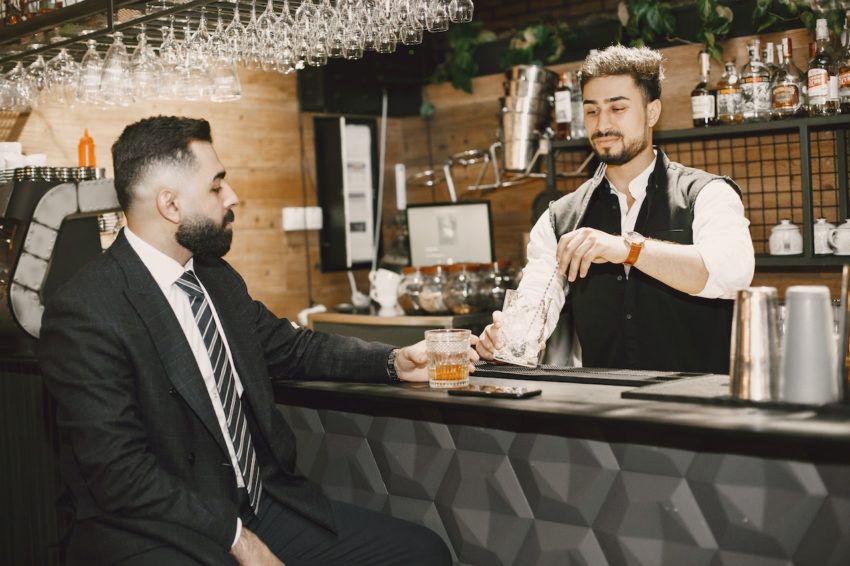Serving alcohol can provide much-needed fun and relaxation to any event. It can also spark up the business of any bar or restaurant. An estimated 60% of Americans consume alcoholic beverages, which makes for many potential customers. Still, it’s essential to be aware of the laws and regulations that govern serving alcoholic drinks and consider several things when serving alcohol at your bar or restaurant.
5 Laws to Know About

Legal drinking age
One of the most important laws related to alcohol consumption is the legal drinking age law. Consumers must be of legal age before they are allowed to drink alcohol. The legal drinking age can vary from country to country. For example, in the United States, the legal drinking age is 21, while in most of the European region, including the United Kingdom, it is 18. Furthermore, both the person serving the alcohol and the consumer who is purchasing or drinking it must be over 18 years old. Violating these regulations is considered a misdemeanor with a penalty of $250.
Required Training
It used to be such that employees at any establishment could start working and serving alcohol without prior training. However, since July 2022, servers and their managers must undergo training for their responsibilities. So, if you’re looking for work at a bar or restaurant serving alcohol, you can get the RBS training online, after which you’ll be able to work there without any problems. Additionally, if you’re considering serving alcoholic beverages at your bar or restaurant, ensure that your workers have completed their Responsible Beverages Service(RBS) training to serve drinks.
Required License
All bars and restaurants must pass routine inspections for licenses or permits which allow them to serve food and alcoholic beverages. Businesses that prepare or serve food, as opposed to those that sell pre-packaged foods like the ones we get from marts, must be inspected by the health departments of their respective states to get permits.
For your establishment to serve alcoholic beverages, it first must meet the required regulation criteria, after which you’ll be able to receive an alcohol-serving permit. There are different types of licenses for serving different kinds of alcohol, such as a permit to serve hard alcohol other than light alcohol like wine or beer.
Periods of buying and selling alcohol
The penalty for purchasing alcohol during prohibited hours is a misdemeanor, and selling alcohol during these hours has a fine of a thousand dollars or six months of jail. For example, the State of California does not permit buying and selling alcohol between 2 am to 6 am; therefore, bars should close up and send their customers out by 2 am. Some states also have regulations that require them not to sell alcohol on a specific day, such as during the elections. In contrast, others may not have any such laws at all, so it’s essential to make sure you’re whether you’re allowed to be conducting business at a time.
Dram Shop Act
One of the paramount laws to keep in mind while serving alcohol is the Dram Shop act, which states that the establishment that served their patrons any alcoholic beverage is responsible for any damages caused by them. For example, suppose you’ve served more alcohol to someone who is already fully intoxicated, and they go on to injure themselves or others. You could also get involved if they press charges for said damages.
In short, this means that if a patron becomes intoxicated and causes an accident, the person or business that served them the alcohol could be held liable for any damages.
4 Things to Consider When Serving Alcohol
Checking ID
The first and foremost thing to do when you’re serving or selling alcohol to someone is to check their ID. Remember, serving alcohol to an underage person is illegal and can get you in a lot of trouble, so make sure to verify that they are of the appropriate age to consume alcohol which is 21 in the United States.
Check for signs of intoxication
Check for signs to ensure that the person is not intoxicated because, as mentioned earlier, it is illegal to serve alcohol to an already intoxicated person. If a person is visibly intoxicated, outright refuse to give them any more alcohol, even if they seem upset by it. Some things you can try to check if a person is visibly intoxicated or not are:
- Slurred speech
- Loss of coordination and balance
- Glassy or bloodshot eyes
- A strong odor of alcohol on my breath.
Availability of transportation
Arrange safe transportation options for guests who have consumed alcohol. It is illegal to drive under the influence of alcohol or drugs, so make sure to call a transportation facility for someone who is visibly intoxicated. Such transportation facilities may include calling a cab or getting them in an Uber, so they don’t drive themselves.
Satisfy all regulations
The last thing, and an important one to consider, is to ensure that you meet all your local, state, and federal laws and regulations related to the sale and service of alcohol with complete adherence. One could always emphasize more how important this is because if a bar or restaurant doesn’t comply with any regulation or breaks laws relating to alcohol, then both the server and establishment can get into a lot of trouble with the authorities. Penalties for breaking each law are different; some give you fines, others jail time, or even require you to do community service.

Conclusion
The state has designed these laws and regulations for serving alcohol for the safety of individuals and the public. So, ensure you are fully aware of laws related to the alcohol business and serving, such as the legal drinking age, the required training and permits, times for selling and purchasing alcohol, and the Dram Shop Act. It is also essential to check the age of your customer, not serve intoxicated persons, and ensure you comply with all laws.

